Black And Decker FS9500RS Handleiding
Black And Decker
Zaagmachine
FS9500RS
Bekijk gratis de handleiding van Black And Decker FS9500RS (6 pagina’s), behorend tot de categorie Zaagmachine. Deze gids werd als nuttig beoordeeld door 46 mensen en kreeg gemiddeld 4.7 sterren uit 23.5 reviews. Heb je een vraag over Black And Decker FS9500RS of wil je andere gebruikers van dit product iets vragen? Stel een vraag
Pagina 1/6

General Safety Rules
WARNING! Read and understand all instructions. Failure to follow all
instructions listed below may result in electric shock, fire and/or serious injury.
The term “power tool” in all of the warnings listed below refers to your mains-
operated (corded) power tool or battery-operated (cordless) power tool.
WARNING: To reduce the risk of injury, user must read instruction manual.
SAVE THESE INSTRUCTIONS
1) WORK AREA SAFETY
a) Keep work area clean and well lit. Cluttered or dark areas invite accidents.
b) Do not operate power tools in explosive atmospheres, such as in the presence
of flammable liquids, gases or dust. Power tools create sparks which may ignite the
dust or fumes.
c) Keep children and bystanders away while operating a power tool. Distractions can
cause you to lose control
2) ELECTRICAL SAFETY
a) Power tool plugs must match the outlet. Never modify the plug in any way. Do
not use any adapter plugs with earthed (grounded) power tools. Unmodified plugs
and matching outlets will reduce risk of electric shock
b) Avoid body contact with earthed or grounded surfaces such as pipes, radiators,
ranges and refrigerators. There is an increased risk of electric shock if your body is
earthed or grounded.
c) Do not expose power tools to rain or wet conditions. Water entering a power tool
will increase the risk of electric shock
d) Do not abuse the cord. Never use the cord for carrying, pulling or unplugging
the power tool. Keep cord away from heat, oil, sharp edges or moving parts.
Damaged or entangled cords increase the risk of electric shock. Replace or repair
damaged cords. Make sure your extension cord is in good condition. Use only 3-wire
extension cords that have 3-prong grounding-type plugs and 3-pole receptacles that
accept the tool’s plug.
e) When operating a power tool outdoors, use an extension cord suitable for
outdoor use. Use of a cord suitable for outdoor use reduces the risk of electric shock.
When using an extension cord, be sure to use one heavy enough to carry the current
your product will draw. An undersized cord will cause a drop in line voltage resulting in
loss of power and overheating. The following table shows the correct size to use
depending on cord length and nameplate ampere rating. If in doubt, use the next heav-
ier gage. The smaller the gage number, the heavier the cord.
Minimum Gage for Cord Sets
Volts Total Length of Cord in Feet
120V 0-25 26-50 51-100 101-150
240V 0-50 51-100 101-200 201-300
Ampere Rating
More Not more AWG
Than Than
0 - 6 18 16 16 14
6 - 10 18 16 14 12
10 - 12 16 16 14 12
12 - 16 14 12 Not Recommended
3) PERSONAL SAFETY
a) Stay alert, watch what you are doing and use common sense when operating a
power tool. Do not use a power tool while you are tired or under the influence of
drugs, alcohol or medication. A moment of inattention while operating power tool
may result in serious personal injury.
b) Use safety equipment. Always wear eye protection. Safety equipment such as dust
mask, non-skid safety shoes, hard hat, or hearing protection used for appropriate
conditions will reduce personal injuries.
c) Avoid accidental starting. Ensure the switch is in the off-position before plugging
in. Carrying power tools with your finger on the switch or plugging in power tools that
have the switch on invites accidents.
d) Remove any adjusting key or wrench before turning the power tool on. A wrench
or a key left attached to a rotating part of the power tool may result in personal injury.
e) Do not overreach. Keep proper footing and balance at all times. This enables better
control of the power tool in unexpected situations.
f) Dress properly. Do not wear loose clothing or jewelry. Keep your hair, clothing
and gloves away from moving parts. Loose clothes, jewelry or long hair can be
caught in moving parts. Air vents often cover moving parts and should also be avoided.
g) If devices are provided for the connection of dust extraction and collection
facilities, ensure these are connected and properly used. Use of these devices can
reduce dust-related hazards.
4) POWER TOOL USE AND CARE
a) Do not force the power tool. Use the correct power tool for your application. The
correct power tool will do the job better and safer at the rate for which it was designed.
b) Do not use the power tool if the switch does not turn it on and off. Any power tool
that cannot be controlled with the switch is dangerous and must be repaired.
c) Disconnect the plug from the power source and/or the battery pack from the
power tool before making any adjustments, changing accessories, or storing
power tools. Such preventive safety measures reduce the risk of starting the power
tool accidentally.
d) Store idle power tools out of the reach of children and do not allow persons
unfamiliar with the power tool or these instructions to operate the power tool.
Power tools are dangerous in the hands of untrained users.
e) Maintain power tools. Check for misalignment or binding of moving parts,
breakage of parts and any other condition that may affect the power tools
operation. If damaged, have the power tool repaired before use. Many accidents
are caused by poorly maintained power tools.
f) Keep cutting tools sharp and clean. Properly maintained cutting tools with sharp
cutting edges are less likely to bind and are easier to control.
g) Use the power tool, accessories and tool bits etc., in accordance with these
instructions and in the manner intended for the particular type of power tool,
taking into account the working conditions and the work to be performed. Use of
the power tool for operations different from those intended could result in a hazardous
situation.
5) SERVICE
a) Have your power tool serviced by a qualified repair person using only identical
replacement parts. This will ensure that the safety of the power tool is maintained.
b) If the replacement of the supply cord is necessary, this has to be done by the
manufacturer or his agent in order to avoid a safety hazard.
Specific Safety Rules
•Hold tool by insulated gripping surfaces when performing an operation where the
cutting tool may contact hidden wiring or its own cord. Contact with a "live" wire will
make exposed metal parts of the tool "live" and shock the operator.
• Keep hands away from cutting area. Never reach underneath the material for any reason.
Hold front of saw by grasping the contoured gripping area. Do not insert fingers or thumb into
the vicinity of the reciprocating blade and blade clamp. Do not stabilize the saw by gripping
the shoe.
• Keep blades sharp. Dull blades may cause the saw to swerve or stall under pressure.
• Use extra caution when cutting overhead and pay particular attention to overhead wires
which may be hidden from view. Anticipate the path of falling branches and debris ahead of
time.
• When cutting pipe or conduit ensure that they are free from water, electrical wiring, etc.
WARNING: Some dust created by power sanding, sawing, grinding, drilling, and
other construction activities contains chemicals known to cause cancer, birth
defects or other reproductive harm. Some examples of these chemicals are:
• lead from lead-based paints,
• crystalline silica from bricks and cement and other masonry products, and
• arsenic and chromium from chemically-treated lumber (CCA).
Your risk from these exposures varies, depending on how often you do this type of
work. To reduce your exposure to these chemicals: work in a well ventilated area, and
work with approved safety equipment, such as those dust masks that are specially
designed to filter out microscopic particles.
• Avoid prolonged contact with dust from power sanding, sawing, grinding, drilling,
and other construction activities. Wear protective clothing and wash exposed
areas with soap and water. Allowing dust to get into your mouth, eyes, or lay on the
skin may promote absorption of harmful chemicals.
WARNING: Use of this tool can generate and/or disperse dust, which may cause
serious and permanent respiratory or other injury. Always use NIOSH/OSHA
approved respiratory protection appropriate for the dust exposure. Direct particles
away from face and body.
CAUTION: Wear appropriate hearing protection during use. Under some conditions
and duration of use, noise from this product may contribute to hearing loss.
The label on your tool may include the following symbols.
V ..........................volts A..........................amperes
Hz ........................hertz W ........................watts
min ........................minutes ......................alternating current
......................direct current no ........................no load speed
..........................Class II Construction ........................earthing terminal
........................safety alert symbol .../min ..................revolutions or
reciprocations
per minute
INSTRUCTION MANUAL
RECIPROCATING SAW - Cat. No. FS9500RS
VEA EL ESPAÑOL EN LA CONTRAPORTADA.
SAVE THIS MANUAL FOR FUTURE REFERENCE.
INSTRUCTIVO DE OPERACIÓN, CENTROS DE SERVICIO Y PÓLIZA
DE GARANTÍA. LÉASE ESTE INSTRUCTIVO ANTESADVERTENCIA:
DE USAR EL PRODUCTO.
CAT. NO. FS9500RS FORM NO. 638034-00
Copyright © 2005 Black & Decker (DEC. ‘05) Printed in China
B E F O R E R E T U R N I N G T H I S P R O D U C T
F O R A N Y R E A S O N P L E A S E C A L L
1-800-544-6986
IF YOU SHOULD EXPERIENCE A PROBLEM
WITH YOUR BLACK & DECKER PRODUCT,
CALL 1-800-544-6986
BEFORE YOU CALL, HAVE THE FOLLOWING INFORMATION AVAILABLE, CATALOG No., TYPE
No., AND DATE CODE. IN MOST CASES, A REPRESENTATIVE CANBLACK & DECKER
RESOLVE YOUR PROBLEM OVER THE PHONE. IF YOU HAVE ASUGGESTION OR
COMMENT, GIVE US ACALL. YOUR FEEDBACK IS VITAL TO BLACK & DECKER.
TRIGGER SWITCH
INTERRUPTEUR À DÉTENTE
GATILLO INTERRUPTOR
3
1 2A
2B

FLUSH CUTTING (FIGURE 7)
• The compact design of the reciprocating saw motor housing and pivoting shoe permit
close cutting to floors, corners and other difficult areas.
• To maximize flush cutting capabilities, insert the blade shaft into the blade clamp with the
teeth of the blade facing up.
• Turn the saw upside down so you are as close to the work surface as possible.
METAL CUTTING (FIGURE 8)
• Use a finer blade for ferrous metals and a coarse blade for non-ferrous materials.
• In thin gauge sheet metals it is best to clamp wood to both sides of sheet. This will
ensure a clean cut without excess vibration or tearing of metal.
• Avoid forcing cutting blade as this reduces blade life and causes costly blade breakage.
NOTE: Spread a thin film of oil or other coolant along the line ahead of the saw cut for
easier operation and longer blade life. For cutting aluminum, kerosene is preferred.
POCKET CUTTING - WOOD ONLY (FIGURE 9)
• Measure the surface area to be cut and mark clearly with a pencil, chalk or scriber.
• Insert blade in blade clamp and tighten blade clamp securely.
• Tip the saw backward until the back edge of the shoe is resting on the work surface and
the moving blade will clear the surface.
• Switch motor on, permitting blade to obtain maximum speed.
• Grip handle steadily and begin a slow, deliberate upward swing with the handle of the
saw.
• The blade will begin to feed into material. Always be sure blade is completely through
material before continuing with pocket cut.
NOTE: In areas where blade visibility is limited, use the edge of the shoe as a guide.
PROJECT TIPS
• Cut only with sharp blades; they cut cleaner, faster and put less strain on the motor while
cutting.
• When cutting, always ensure that the shoe is resting firmly against the workpiece. This
will improve operator control and minimize vibration.
• For longer blade life, use bi-metal blades. These utilize a carbon steel back welded to
high speed steel teeth making the blade more flexible and less prone to breaking.
MAINTENANCE
UNPLUG SAW AND REMOVE ACCESSORY WHEN PERFORMING ANY CLEANING OR
OTHER MAINTENANCE. WHEN SERVICING USE ONLY IDENTICAL REPLACEMENT
PARTS.
• Avoid using solvents when cleaning plastic parts. Most plastics are susceptible to various
types of commercial solvents and may be damaged by their use. Use clean cloths to
remove dirt, carbon dust etc.
• When electric tools are used on fiberglass boats, sports cars, drywall etc., they are
subject to accelerated wear and possible premature failure, as the fiberglass chips and
grindings and drywall dust are highly abrasive to bearings, brushes, commutator, etc.
During any use on fiberglass or drywall it is extremely important that the tool be cleaned
frequently by blowing with an air jet.
LUBRICATION
Your saw was properly lubricated before leaving the factory. Once every year take or send
your saw to a Black & Decker service center, or authorized service station, for a complete
cleaning, inspection and lubrication. Tools "out of service" for long periods should be
relubricated before being put back to work.
IMPORTANT: To assure product SAFETY and RELIABILITY, repairs, maintenance and
adjustment should be performed by authorized service centers or other qualified service
personnel, always using identical replacement parts
ACCESSORIES
BLADES
The saw will accept up to a 12 inch long blade. Always use the shortest blade suitable for
your project but long enough to keep the blade cutting through the material. Longer blades
are more likely to be bent or damaged during use. During operation some longer blades may
vibrate or shake if the saw is not kept in contact with the workpiece.
PRUNING ATTACHMENT
A pruning attachment is also available for use with your Reciprocating Saw. This accessory
attaches to the shoe of the saw and applies spring loaded pressure to the branch while
cutting.
Recommended accessories for use with your saw are available from your local dealer or
authorized service center. If you need assistance regarding accessories, please call:
1-800-544-6986.
WARNING: The use of any accessory not recommended for use with this tool could be
hazardous.
Troubleshooting
Problem Possible Cause Possible Solution
• Unit will not start. • Cord not plugged in. • Plug in cord.
• Circuit fuse is blown. • Replace circuit
fuse.
• Circuit breaker is tripped. • Reset circuit
breaker.
• Cord or switch is damaged. • Have cord or
switch replaced at
Black &Decker
Service Center or
Authorized Servicer
For assistance with your product, visit our website www.black&decker.com for the location
of the service center nearest you or call the BLACK & DECKER help line at
1-800-544-6986.
SERVICE INFORMATION
Black & Decker offers a full network of company-owned and authorized service locations
throughout North America. All Black & Decker Service Centers are staffed with trained
personnel to provide customers with efficient and reliable power tool service. Whether you
need technical advice, repair, or genuine factory replacement parts, contact the
Black & Decker location nearest you. To find your local service location, refer to the yellow
page directory under "Tools—Electric" or call: 1-800-544-6986.
FULL TWO YEAR WARRANTY
Black & Decker (U.S.) Inc. warrants this product for two years against any defects in
material or workmanship. The defective product will be replaced or repaired at no charge in
either of two ways.
The first, which will result in exchanges only, is to return the product to the retailer from whom
it was purchased (provided that the store is a participating retailer). Returns should be made
within the time period of the retailer’s policy for exchanges (usually 30 to 90 days after the
sale). Proof of purchase may be required. Please check with the retailer for their specific
return policy regarding returns that are beyond the time set for exchanges.
The second option is to take or send the product (prepaid) to a Black & Decker owned or
authorized Service Center for repair or replacement at our option. Proof of purchase may be
required. Black & Decker owned and authorized Service Centers are listed under
"Tools-Electric" in the yellow pages of the phone directory and available on our website
www.blackanddecker.com.
This warranty does not apply to accessories. This warranty gives you specific legal rights and
you may have other rights which vary from state to state. Should you have any
questions, contact the manager of your nearest Black & Decker Service Center.
Free warning label replacement: If your warning labels become illegible or are missing,
call 1-800-544-6986 for a free replacement.
SPECIAL WARRANTY NOTE TO CONTRACTORS:
FIRESTORMTM branded products are offered as high end consumer home use tools and
carry a HOME USE WARRANTY. These tools are designed, manufactured and tested to
meet or exceed the needs of the do-it-yourselfer in the execution of projects and repairs in
and around the home. With proper use they will provide the home owner with step up power
and performance well beyond their two year warranty. However, if you use tools for a living
and use FIRESTORMTM branded products or any of Black & Decker’s other Consumer Home
Use tools you should know that they ON THE JOBSITE CANNOT BE COVERED UNDER
OUR WARRANTY.
MOTOR
Be sure your power supply agrees with nameplate marking. 120 Volts AC only means your
tool will operate on standard 60 Hz household power. Do not operate AC tools on DC. A
rating of 120 volts AC/DC means that you tool will operate on standard 60 Hz AC or DC
power. This information is printed on the nameplate. Lower voltage will cause loss of power
and can result in over-heating. All Black & Decker tools are factory-tested; if this tool does
not operate, check the power supply.
SAVE THESE INSTRUCTIONS
OPERATION
CAUTION: For your own safety, do not connect the machine to the power source
until the machine is completely assembled and you read and understand the entire
instruction manual.
WARNING: Always wear eye protection while operating this power tool.
NOTE: Before cutting any type of material, be sure it is firmly anchored or clamped to pre-
vent slipping.
• Place blade lightly against work to be cut.
• Switch on saw motor before applying pressure.
•WARNING: LACERATION HAZARD. Never hold and use the product with your
fingers wrapped around shoe adjustment button. Always hold saw firmly with both
hands while cutting as shown in Figure 1 or , if you prefer, use the auxilary handle.
Whenever possible, the saw shoe must be held firmly against the material being cut.
This will prevent the saw from jumping or vibrating and minimize blade breakage.
AUXILIARY HANDLE (FIGURE 2)
The auxiliary handle offers a greater choice of gripping positions. 8 clamping locations are
available for auxiliary handle placement.
CAUTION: TURN OFF AND UNPLUG SAW.
ATTACHING THE AUXILIARY HANDLE TO THE SAW:
• Wrap the handle and strap around the forward gripping area of the saw (shown in
figure 2A).
• Be certain the handle and strap indexing features are fully engaged in the matching saw
positions.
• Hook the clamp and strap together and press the clamp lever to the handle to securely
latch the handle as shown in figure 2B.
• Check to ensure the handle is secure before cutting.
REMOVING THE AUXILIARY HANDLE.
• Lift lever and unhook clamp from strap.
• Separate and remove the handle and strap from the saw
SWITCH (ON-OFF) (FIGURE 3)
Depress the trigger switch to turn tool “ON”. Releasing the trigger turns the tool “OFF”
NOTE: This tool has no provision to lock the switch in the ON position, and should never be
locked in the ON position by any other means.
VARIABLE SPEED SELECTOR WHEEL (FIGURE 4)
The variable speed selector wheel offers a choice of speeds for greatly improved cutting
rates in various materials. To select a slower speed for operating the saw, rotate the wheel to
a low number on the dial. To select a higher speed, rotate the wheel to a higher number.
BLADE CLAMP RELEASE LEVER (FIGURE 5)
CAUTION: LACERATION HAZARD. TURN OFF AND UNPLUG FROM POWER
SUPPLY WHEN CHANGING BLADES.
To install blade into saw:
1. Lift the blade clamp release lever to its full open position as shown in Figure 5.
2. Insert blade shank from the front locating hole in blade over pin on reciprocating shaft.
3. Close blade clamp release lever.
4. Check to ensure blade is secure before cutting.
To remove blade from saw:
1. Open blade clamp release lever to its full open position.
2. Remove blade.
ADJUSTABLE SHOE (FIGURE 6)
CAUTION: TURN OFF AND UNPLUG SAW.
The shoe will adjust to limit the depth of cut. Hold the saw with the underside facing up.
Push the button (shown in ) on the hand grip and slide the shoe out to one of theFigure 6
three settings and release the button.
7
8
6
9
5
4
See ‘Tools-Electric’
– Yellow Pages –
for Service & Sales
Black & Decker (U.S.) Inc.,
701 E. Joppa Rd.
Towson, MD 21286 U.S.A.

Règles de sécurité générales
AVERTISSEMENT : Lire et comprendre toutes les directives. Tout manquement aux
directives suivantes pose des risques de choc électrique, d’incendie et/ou de blessure
grave. Le terme « outil électrique » dans tous les avertissements ci-après se rapporte à
votre outil électrique à alimentation sur secteur (avec fil) ou par piles (sans fil).
AVERTISSEMENT : afin de réduire le risque de blessures, l’utilisateur doit lire le
mode d’emploi. CONSERVER CES DIRECTIVES
1) SÉCURITÉ DU LIEU DE TRAVAIL
a) Tenir la zone de travail propre et bien éclairée. Les endroits sombres sont souvent
des causes d'accidents.
b) Ne pas faire fonctionner d’outils électriques dans un milieu déflagrant, soit en
présence de liquides inflammables, de gaz ou de poussière. Les outils électriques
produisent des étincelles qui peuvent enflammer la poussière ou les vapeurs.
c) Éloigner les enfants et les curieux au moment d’utiliser un outil électrique. Une
distraction pourrait vous en faire perdre la maîtrise.
2) SÉCURITÉ EN MATIÈRE D’ÉLECTRICITÉ
a) Les fiches des outils électriques doivent correspondre à la prise. Ne jamais
modifier la fiche en aucune façon. Ne jamais utiliser de fiche d’adaptation avec un
outil électrique mis à la terre. Le risque de choc électrique sera réduit par l’utilisation de
fiches non modifiées correspondant à la prise.
b) Éviter tout contact physique avec des surfaces mises à la terre comme des
tuyaux, des radiateurs, des cuisinières et des réfrigérateurs. Le risque de choc
électrique est plus élevé si votre corps est mis à la terre.
c) Ne pas exposer les outils électriques à la pluie ou à d'autres conditions où il
pourrait être mouillé. La pénétration de l’eau dans un outil électrique augmente le
risque de choc électrique.
d) Ne pas utiliser abusivement le cordon d’alimentation. Ne jamais utiliser le cordon
pour transporter, tirer ou débrancher un outil électrique. Tenir le cordon éloigné
de la chaleur, de l’huile, des bords tranchants ou des pièces mobiles. Les cor-
dons endommagés ou emmêlés augmentent les risques de choc électrique. Remplacer
ou réparer les cordons endommagés. S’assurer que la rallonge est en bon état. Utiliser
uniquement une rallonge à 3 fils pourvue d'une fiche de mise à la terre à 3 lames et
une prise à 3 fentes correspondant à la fiche.
e) Pour l’utilisation d’un outil électrique à l’extérieur, se servir d’une rallonge
convenant à une telle utilisation. L’utilisation d’une rallonge conçue pour l’extérieur
réduit les risques de choc électrique. Lorsque qu’une rallonge électrique est utilisée,
s’assurer d’en utiliser une de calibre suffisamment élevé pour assurer le transport du
courant nécessaire au fonctionnement de votre appareil. Un cordon de calibre inférieur
causera une chute de tension de ligne et donc une perte de puissance et une
surchauffe. Le tableau suivant indique le calibre approprié à utiliser selon la longueur
du cordon et l’intensité nominale de la plaque signalétique. En cas de doute, utiliser le
calibre suivant le plus gros. Plus le numéro de calibre est petit, plus le cordon est
lourd.
3) SÉCURITÉ PERSONNELLE
a) Être vigilant, surveiller le travail effectué et faire preuve de jugement lorsqu’un
outil électrique est utilisé. Ne pas utiliser d’outil électrique en cas de fatigue ou
sous l’influence de drogues, d’alcool ou de médicaments. Un moment d’inatten-
tion, durant l’utilisation d’un outil électrique, peut se solder par des blessures graves.
b) Utiliser un équipement de sécurité. Toujours porter une protection oculaire.
L’utilisation d’un équipement de sécurité comme un masque anti-poussières, des
chaussures antidérapantes, un casque de sécurité ou des protecteurs auditifs lorsque
la situation le requiert réduira les risques de blessures corporelles.
c) Attention de ne pas mettre en marche l’outil accidentellement. S’assurer que
l’interrupteur est en position d’arrêt avant tout branchement. Transporter un outil
électrique alors que le doigt est sur l’interrupteur ou brancher un outil électrique alors
que l’interrupteur est en position de marche risque de causer un accident.
d) Retirer toute clé de réglage ou clé standard avant de démarrer l’outil. Une clé
standard ou une clé de réglage attachée à une partie pivotante peut causer des
blessures.
e) Ne pas trop tendre les bras. Conserver son équilibre en tout temps. Cela permet
de mieux maîtriser l’outil électrique dans les situations imprévues.
f) S’habiller de manière appropriée. Ne pas porter de vêtements amples ni de
bijoux. Maintenir cheveux, vêtements et gants éloignés des pièces mobiles. Les
vêtements amples, bijoux ou cheveux longs pourraient s'enchevêtrer dans les pièces
mobiles. Se tenir éloigné des évents puisque ces derniers pourraient camoufler des
pièces mobiles.
g) Si des composants sont fournis pour le raccordement de dispositifs de
dépoussiérage et de ramassage, s’assurer que ceux-ci sont bien raccordés et
utilisés. L’utilisation de ces dispositifs peut réduire les risques engendrés par les
poussières.
4) UTILISATION ET ENTRETIEN D’UN OUTIL ÉLECTRIQUE
a) Ne pas forcer un outil électrique. Utiliser l’outil électrique approprié à
l’application. L’outil électrique approprié effectuera un meilleur travail, de façon plus
sûre et à la vitesse pour laquelle il a été conçu.
b) Ne pas utiliser un outil électrique dont l’interrupteur est défectueux. Tout outil
électrique dont l’interrupteur est défectueux est dangereux et doit être réparé.
c) Débrancher la fiche du secteur ou le bloc-piles de l’outil électrique avant de faire
tout réglage ou changement d’accessoire, ou avant de ranger l’outil électrique.
Ces mesures préventives réduisent les risques de démarrage accidentel de l’outil
électrique.
d) Ranger les outils électriques hors de la portée des enfants, et ne permettre à
aucune personne n’étant pas familière avec un outil électrique (ou son manuel
d’instruction) d’utiliser ce dernier. Les outils électriques deviennent dangereux entre
les mains d’utilisateurs inexpérimentés.
e) Entretenir les outils électriques. Vérifier les pièces mobiles pour s’assurer
qu’elles sont bien alignées et tournent librement, qu’elles sont en bon état et ne
sont affectées par aucun trouble susceptible de nuire au bon fonctionnement de
l’outil électrique. En cas de dommage, faire réparer l’outil électrique avant toute
nouvelle utilisation. Beaucoup d’accidents sont causés par des outils électriques mal
entretenus.
f) S’assurer que les outils de coupe sont aiguisés et propres. Les outils de coupe
bien entretenus et affûtés sont moins susceptibles de se coincer et sont plus faciles à
contrôler.
g) Utiliser l’outil électrique, les accessoires, les mèches, etc., conformément aux
présentes directives et suivant la manière prévue pour ce type particulier d’outil
électrique, en tenant compte des conditions de travail et du travail à effectuer.
L’utilisation d’un outil électrique pour toute opération autre que celle pour laquelle il a
été conçu est dangereuse.
5) RÉPARATION
a) Faire réparer l’outil électrique par un réparateur professionnel en n’utilisant que
des pièces de rechange identiques. Cela permettra de maintenir une utilisation
sécuritaire de l’outil électrique.
b) S’il faut remplacer le cordon d’alimentation, ceci doit être fait par le fabricant ou son
agent pour éviter tout risque d’accident.
Règles de sécurité spécifiques
•Tenir l’outil par sa surface de prise isolée dans une situation où l’outil de coupe peut
entrer en contact avec un câblage caché ou avec son propre cordon d’alimentation.
Tout contact avec un fil « sous tension » mettra « sous tension » les pièces métalliques de
l’outil et provoquera un choc électrique chez l’opérateur de l’outil.
•Tenir les mains éloignées de la zone de découpe. Ne jamais mettre la main sous le
matériau pour quelque raison que ce soit. Tenir la partie avant de la scie par sa zone de
prise profilée. Ne pas mettre les doigts ou le pouce à proximité de la scie alternative et du
mécanisme de serrage de la lame. Ne pas stabiliser la scie en saisissant la semelle.
•Maintenir les lames affûtées. Les lames émoussées peuvent faire zigzaguer la lame ou
la bloquer sous la pression.
•Être très prudent pour effectuer une coupe au-dessus de votre tête et porter une
attention accrue aux fils en hauteur pouvant être cachés. Prévoir la direction de la chute
des branches et de débris.
•Au moment de couper un tuyau ou un conduit, s’assurer qu’ils sont exempts d’eau, de
câblage électrique, etc.
AVERTISSEMENT : Certaines poussières produites par les activités de ponçage, de
sciage, de meulage, de perçage et autres activités de construction peuvent contenir
des produits chimiques pouvant causer le cancer, des anomalies
congénitales ou d'autres dangers pour la reproduction. Voici quelques exemples de
ces produits chimiques :
• le plomb contenu dans les peintures à base de plomb;
• la silice cristalline de la brique, du ciment et d'autres produits de maçonnerie ;
• l'arsenic et le chrome provenant du bois traité chimiquement (arséniate de cuivre
et de chrome).
Les risques reliés à l'exposition à ces poussières varient selon la fréquence à laquelle
l’utilisateur effectue ce type de travail. Afin de réduire votre exposition à ces produits
chimiques : travailler dans un endroit bien ventilé ; porter un équipement de sécurité
homologué comme le masque antipoussières conçu spécialement pour filtrer les particules
microscopiques.
•Éviter le contact prolongé avec les poussières produites par les activités de
ponçage, sciage, meulage, perçage et autres activités de construction. Porter des
vêtements de protection et laver les parties exposées au savon et à l’eau. Laisser la
poussière pénétrer dans la bouche, les yeux ou reposer sur la peau favorise l’absorption
de produits chimiques nocifs.
AVERTISSEMENT : L’utilisation de cet outil peut produire de la poussière et la
disperser, ce qui peut causer des troubles respiratoires graves et permanents et
d’autres blessures. Toujours utiliser un dispositif de protection respiratoire homologué par
le NIOSH/OSHA qui permet de protéger contre la poussière. Diriger les particules loin du
visage et du corps.
MISE EN GARDE : Porter un dispositif de protection anti-bruit pendant l’utilisation
de l’outil. Dans certaines conditions et selon la durée d’utilisation, le bruit causé par ce
produit peut contribuer à une perte auditive.
L’étiquette apposée sur votre outil peut comprendre les symboles suivants.
V ................. volts A....................ampères
Hz ................ hertz W...................watts
min .. .............minutes .................courant alternatif
.............. courant continu
no
................vitesse à vide
...............assemblage de classe II .................borne de terre
...................symbole d’alerte à .../min ............min ou alternances par minute
la sécurité
Moteur
S’assurer que le bloc d’alimentation est compatible avec l’inscription de la plaque
signalétique. 120 volts c.a. signifie seulement que l’outil fonctionnera sur une alimentation
domestique standard de 60 Hz. Ne pas faire fonctionner des outils à courant alternatif (c.a.)
sur un courant continu (c.c.). Un régime nominal de 120 volts c.a./c.c. signifie que l’outil
fonctionnera avec une alimentation standard 60 Hz c.a. ou c.c. Ce renseignement figure
sur la plaque signalétique. Une plus faible tension entraînera une baisse de régime, ce qui
peut entraîner une surchauffe. Tous les outils Black & Decker sont testés en usine; si cet
outil ne fonctionne pas, vérifier le bloc d’alimentation.
CONSERVER CES DIRECTIVES
FONCTIONNEMENT
MISE EN GARDE : pour votre propre sécurité, ne pas brancher la machine à une
source d’alimentation avant que la machine ne soit entièrement assemblée, ni avant
d’avoir lu et compris l’intégralité de ce mode d’emploi.
AVERTISSEMENT : toujours porter une protection oculaire durant l’utilisation de
l’outil électrique.
REMARQUE : avant de couper tout matériau, s’assurer que ce dernier est bien ancré ou
serré dans un étau pour éviter tout glissement.
• Placer la lame légèrement contre la pièce à couper.
• Mettre en marche le moteur de la scie avant d’appliquer toute pression.
AVERTISSEMENT : RISQUE DE LACÉRATION. Ne jamais tenir et utiliser le produit
avec les doigts enroulés autour du bouton qui affiche les réglages. Toujours tenir
fermement la scie avec les deux mains en cours de coupe comme indiqué à la figure 1 ou
utiliser la poignée auxiliaire. Autant que possible, la semelle de la scie doit être solidement
appuyée contre le matériau à couper. Cela évite tout écart ou vibration de la scie et réduira
le bris de lame.
POIGNÉE AUXILIAIRE (FIGURE 2)
La poignée auxiliaire comporte un plus grand nombre de positions pour la prise de l’outil.
Huit emplacements de fixation, pour la poignée auxiliaire, sont disponibles.
MISE EN GARDE : ÉTEINDRE ET DÉBRANCHER LA SCIE.
FIXATION DE LA POIGNÉE AUXILIAIRE À LA SCIE :
• Placer la poignée et enrouler la sangle autour de la section de prise avant de la scie
(comme indiqué à la figure 2A).
• S’assurer que les dispositifs d’indexation de la poignée et de la sangle soient entièrement
engagés dans les positions correspondantes sur la scie.
• Joindre la fixation et la sangle et appuyer sur le levier de la fixation sur la poignée pour la
bloquer solidement comme indiqué à la figure 2B.
• S’assurer que la poignée soit fixe avant d’effectuer une coupe.
DÉSASSEMBLAGE DE LA POIGNÉE AUXILIAIRE.
• Soulever le levier et décrocher la fixation de la sangle.
• Désaccoupler et dégager la poignée et la sangle de la scie
INTERRUPTEUR (MARCHE-ARRÊT) (FIGURE 3)
Enfoncer la gâchette pour mettre l’outil à la position de MARCHE. Le fait de relâcher la
gâchette règle l’outil à la position d’ARRÊT. Cet outil n’est doté d’aucunREMARQUE :
dispositif permettant de verrouiller l’interrupteur à la position de MARCHE ; il ne doit donc
jamais être verrouillé à cette position par quelque moyen que ce soit.
ROUE SÉLECTRICE DE VITESSE VARIABLE (FIGURE 4)
Cette roue sélectrice offre un choix de vitesses permettant d’améliorer grandement les
vitesses de coupe de divers matériaux. Pour choisir une vitesse inférieure pour le
fonctionnement de la scie, tourner la roue à un chiffre inférieur figurant sur le cadran. Pour
choisir une vitesse plus élevée, tourner la roue à un chiffre supérieur.
AVANT DE RETOURNER CE PRODUIT POUR QUELQUE
RAISON QUI SOIT, VEUILLEZ APPELER AU
1-800-54-HOW-TO (544-6986)
Calibre minimum pour les rallonges
Volts Longueur totale du cordon en pieds
120 V 0-25 26-50 51-100 101-150
240 V 0-50 51-100 101-200 201-300
Intensité nominale
Plus Pas plus Calibrage américain normalisé des fils
(AWG)
de de
0 - 6 18 16 16 14
6 - 10 18 16 14 12
10 - 12 16 16 14 12
12 - 16 14 12 Non recommandé
Product specificaties
| Merk: | Black And Decker |
| Categorie: | Zaagmachine |
| Model: | FS9500RS |
Heb je hulp nodig?
Als je hulp nodig hebt met Black And Decker FS9500RS stel dan hieronder een vraag en andere gebruikers zullen je antwoorden
Handleiding Zaagmachine Black And Decker

26 Augustus 2024

26 Augustus 2024

28 Juni 2024

17 Augustus 2023

6 Juli 2023

18 Juni 2023

17 Juni 2023

16 Juni 2023

12 Juni 2023

11 Juni 2023
Handleiding Zaagmachine
- Shindaiwa
- Homelite
- Zipper
- Extralink
- Alpina
- MacAllister
- Dexter
- Scheppach
- Skil
- Ozito
- Spear & Jackson
- Plantiflor
- Sterwins
- Truper
- Defort
Nieuwste handleidingen voor Zaagmachine
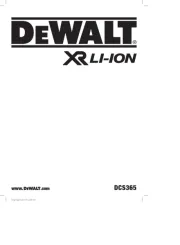
3 Augustus 2025
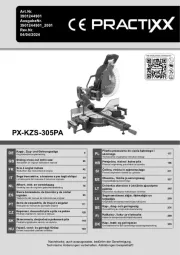
30 Juli 2025
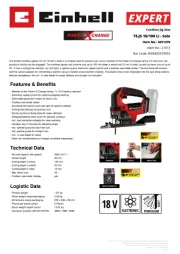
29 Juli 2025
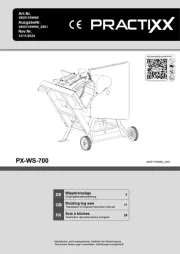
29 Juli 2025
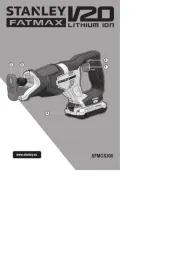
29 Juli 2025
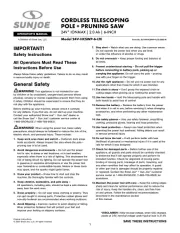
29 Juli 2025
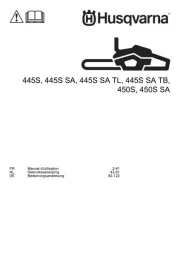
28 Juli 2025
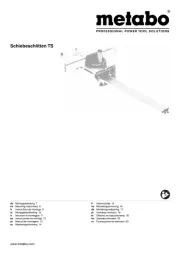
23 Juli 2025
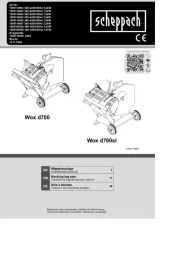
21 Juli 2025
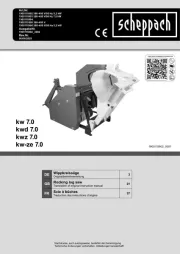
21 Juli 2025